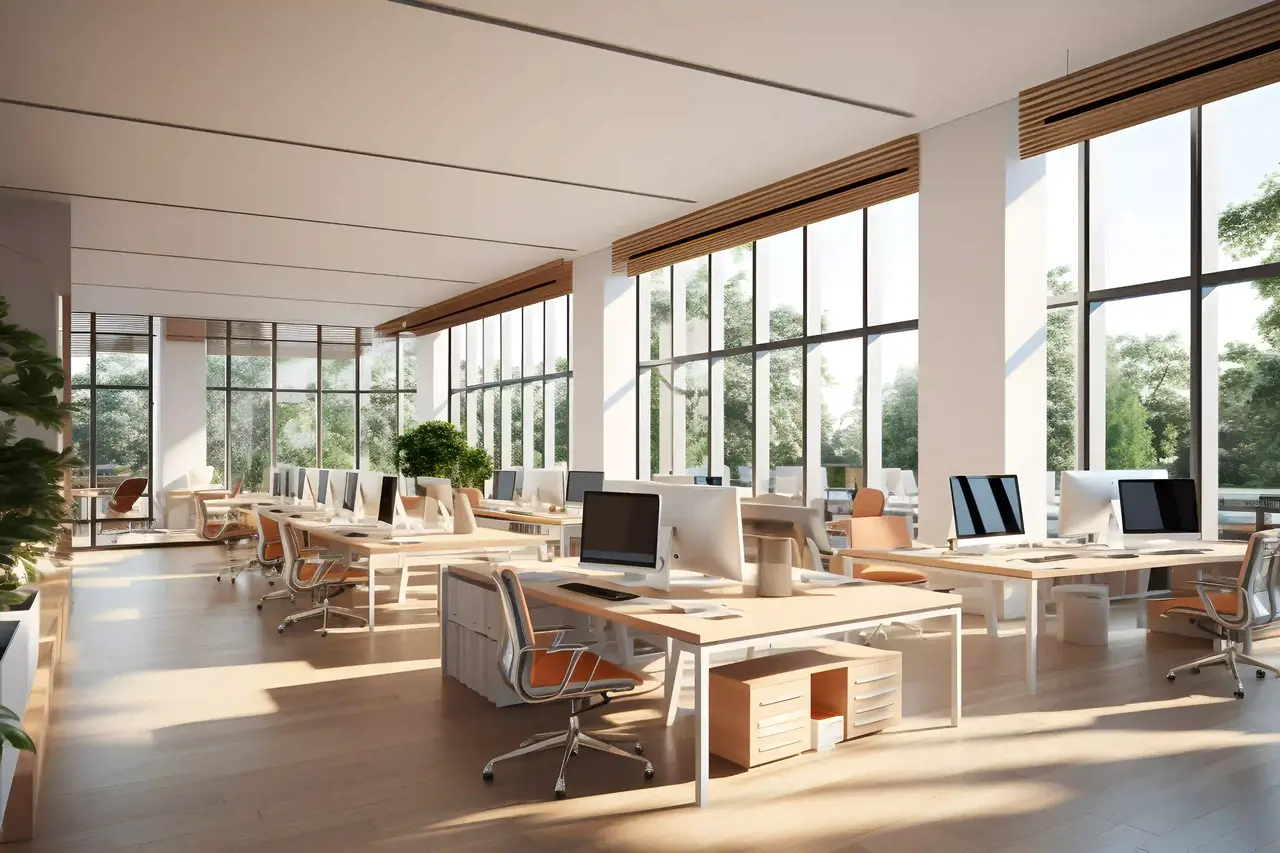
4 Trends That Are Shaping the Future of Flexible Workspaces
Imagine choosing between a well-designed workspace for a seamless work experience or a migraine-inducing traditional cubicle flooded with random things.
The choice is obvious: most professionals would choose the former option. Modern office spaces have features and benefits that people can’t resist. The demand for a fully functional and aesthetically pleasant environment contributes greatly to the rising popularity of flexible workspaces. These shared office spaces are perfect for professionals seeking an alternative to traditional offices and a distraction-free work environment.
The demand for coworking spaces is not to escape conventional office settings; their functionality and comfort are unavoidable. These spaces provide a professional yet creative atmosphere supplemented with thematic architecture, ergonomic furniture, and the opportunity to work with like-minded people. While looking at the current popularity of shared office spaces, one question that automatically pops up is: Is this a future workspace? To find an unbiased answer, let’s explore this blog.
How did the concept of flexible workspaces develop?
The main reasons for the development of modern office space are technological advancements, economic shifts, and globalization. Initially, these workspaces were the cost-effective alternative for writers, small businesses, and freelancers. By passing years, technological advancements led to the creation of shared office environments where individuals could work independently while enjoying the benefits of a community. Hackerspace, the first known shared office space, was established in Berlin in 1995. This concept gained traction in the late 2000s, and since then, there has been no looking back.
Today, modern office spaces serve all the needs of the workforce – comfortable workplaces, flexibility, and contemporary amenities as per the specific needs of professionals and businesses. The rate at which the popularity of shared office spaces is increasing, and it may keep evolving with time to support collaboration across different industries.
How Flexible WorkSpaces Are Transforming the Future of Work
Coworking spaces offer a zestful and collaborative environment. These features help employers retain employees and help employees work efficiently. All these benefits and features cater to the evolving needs of today’s workforce.
Here are 4 Trends That Are Shaping the Future of Flexible Workspaces:
The world of work is constantly growing, and flexible office spaces are an integral part of this transformation. In this world of work, businesses and employees are revamping their ways of working. To foster this evolution, several emerging trends are redefining what office spaces look like and how they function. Here are four key trends shaping the future of flexible workspaces:
Hybrid Work Models
During lockdown, staying at home and working for safety was necessary. Over time, people adapted to this work setting and found WFH convenient. After the lockdown, most of the workforce demanded WFH, but employers were not entirely convenient, so hybrid work models benefit both parties. The hybrid work model combines remote work and on-site work and is becoming increasingly popular. This approach allows employees to enjoy the benefits of both worlds: the convenience and flexibility of working from home and the office’s collaborative environment.
How it impacted workspaces:
- Work-Life Balance: The hybrid model is ideal for employers and employees to maintain work-life balance and work efficiency. It is a crucial factor for employee retention and satisfaction at the workplace.
- Tech-driven workspace: Advanced technology solutions, such as video conferencing facilities and collaborative software, are essential to support seamless communication between remote and on-site teams.
- Redefining Design: Shared office spaces are more adaptive and flexible, so they can accommodate both remote and in-office workers.
Tech-Driven Office Solutions
Life without technology is next to impossible these days, and so is work. Technological advancements are the major reasons for the evolution of flexible office spaces. From biometric authentication to AI-driven functionalities, everything is the outcome of technology integration.
How it impacted workspaces:
- Smart Offices: Integrating smart office solutions such as access control, climate control, and emergency alarms creates a comfortable and convenient environment, and who doesn’t like comfort?
- Automation: Automated systems for repetitive tasks, integration of automated coffee machines, access management, and analytics and reporting improve the work experience.
- Virtual-Office Tools: Advanced tools and subscriptions to the virtual platforms help to work seamlessly virtually.
Health and Wellness Focus
The recent COVID pandemic enlightened the human race about the importance of health. People now understand that if you lose wealth, you lose something, but if you lose health, you lose everything.
How it impacted workspaces:
- Wellness Sessions: Many coworking spaces arrange on-site yoga sessions, mental health support, and professional growth seminars to promote overall well-being.
- Open Office Layout: These kinds of office spaces are designed with an open layout and are regularly sanitized, unlike traditional, closely spaced workspaces.
- Biophillic Interior: Integrating indoor plants, a strategically located natural light source and lively colors transform the boring workplace into a creative work hub.
Community and Networking Opportunities
How it impacted workspaces:
- Expert Seminars: Many coworking spaces organize workshops, social gatherings, and seminars for professionals to help them enhance their skills and grow careers.
- Like-minded Peers: In coworking spaces, people from different industries come to work so you can meet new people from various industries every day. Interaction with them helps you grow the horizon of your knowledge and grow your professional network.
- Collaborative Spaces: Different areas in coworking spaces, such as cafeterias, kitchen areas, lounges, and play zones, encourage spontaneous interaction among members and help form new connections.
In Conclusion:
These modern-day trends of lavish office space are shaping the future of modern office spaces. These trends contribute highly to creating flexible, adaptive, efficient, and user-friendly work environments. With the changing work landscape, contemporary office spaces will play a crucial role in supporting the evolving needs of the workforce across different industries. Flexible workspaces offer comfort and help employees stay productive while working. By following the above trends, workspace providers can remain competent and relevant in this continuously evolving world of modern office spaces.


